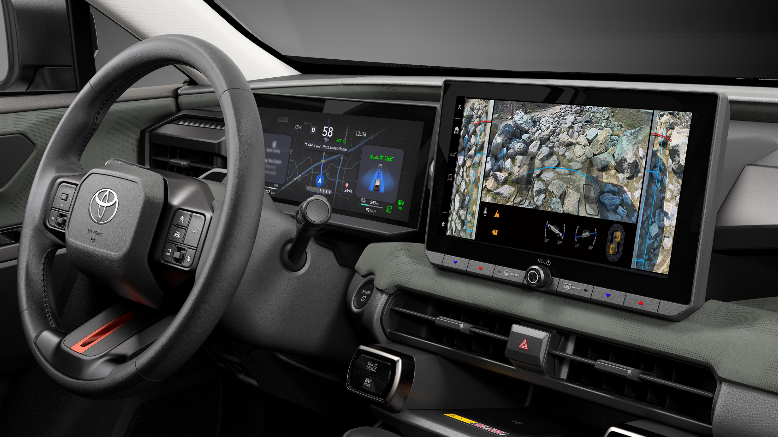LATEST NEWS
2026 RAV4’s hybrid, PHEV spread clarified
Richard Bosselman
October 23, 2025
Self-contained system primarily front foots fleet-favoured choices, while mainly upmarket editions have new mains-fed option.
ELABORATION has come from Toyota NZ about which grades of its RAV4 will continue with the existing internal hybrid drivetrain and which will ramp up to a mains-replenished option fresh to the NZ-new family.
Six variants are sticking with an updated version of the familiar drivetrain and four are going to the new plug-in hybrid format, also involving a 2.5-litre four-cylinder petrol as it does at present but with up to 84kW more power, that will be a more powerful ally in the market leader’s bid to keep its CO2 fleet average in check.
In explaining this, the Palmerston North market leader has also appeared to revise when the next generation car will land.
Having indicated just last month that a mid-year general provision could be on the cards - with only demonstrators likely to show before June - it now appears to suggest early 2026 is more likely for hybrid versions to come in, with June still the probable timing for the PHEVs.
Pricing and exact specification has yet to be delivered.
The latest information share continues a pre-launch spruik that has switched on as supply of the current car appears on the cusp of either degrading, or perhaps switching off completely, going by talk at dealership level.
TNZ itself has yet to speak to the state of supply and it the current car will maintain right up until the new is here.
The current car has been massively successful, not only holding firmly as Toyota’s top seller but often also placing as one of the country’s highest performing passenger models in any given month. That feed is thought to be supported by it having a strong fleet appeal, particularly with rental providers.
Central to the car’s strong performance has been its self-contained hybrid drivetrain; Kiwis are far more in favour of those than the next-step PHEV option.
Toyota NZ seems set to leverage the trend to full potential with the next generation.
Models contained in the entry specification, now labelled Core, are front-footing, starting with the GX and GXL in front-drive and all-wheel-drive formats. Also running the contained hybrid are a Limited and an Adventure, also with all-paw.
The PHEV applies to just one front-drive application, in GXL spec, and otherwise will feature on the XSE and GR Sport grades, which are AWD. The GR Sport is also the new flagship.
The PHEV comprises a 2.5-litre non-turbo four-cylinder petrol engine and a 22.7kWh battery, for a combined output of 227kW in dual motor form. The latter is expected to provision about 100km of EV-only motoring, when measured to the WLTP scale, but the single motor could be expected to stretch that out further.
The battery will require about 13 hours to charge from a home powerpoint, or as little as three hours with a wallbox charger.
It will also have DC fast charging capability, able to be charged at up to 50kW from 10 to 80 percent capacity in 30 minutes.
This choice logically allows this Toyota to become a full competitor to the Mitsubishi Outlander - which has had PHEV since 2014 - the Mazda CX-60 and BYD Sealion 6.
Regular hybrid models combine the 2.5-litre engine with a new-generation front electric motor and battery. All-wheel-drive hybrids include a second, rear-mounted electric motor, with no connection between the engine and rear axle, as with today’s model. Clarity about the hybrid’s output has yet to come; the current model makes 160kW to 163kW.
In supplied comment, TNZ chief strategy officer Andrew Davis says an expanded RAV4 range and introduction of the PHEV will make this sixth generation of the nameplate even more appealing.
“The RAV4 has been hugely successful in New Zealand, having been the best-selling passenger vehicle in the country for the past three years … the introduction of the new PHEV powertrain showcases our multi-pathway approach to electrification by offering a range of powertrain options suited to different applications, with our plug-in hybrid delivering both high levels of performance and efficiency.”
TNZ says the lineup has structured to meet the needs of three key groups – private customers, business and fleet buyers, and driving enthusiasts.
As an example, it proposes the front-drive GXL will appeal to private, business and fleet customers looking for fuel and CO2 savings but with no desire for AWD.
Conversely, the AWD PHEV in XSE is for customers looking to step up from the current RAV4 AWD hybrids. As the most powerful RAV4 yet sold here, GR Sport has enhanced driving performance.




